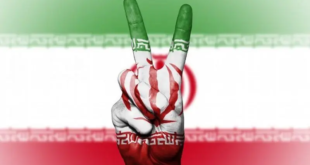 BAGHDAD (Reuters) – In Iraq’s national museum a frieze shows Assyrian King Sargon II, who ruled an empire from what is now northern Iraq, storming a rampart as soldiers pile decapitated heads before him.
BAGHDAD (Reuters) – In Iraq’s national museum a frieze shows Assyrian King Sargon II, who ruled an empire from what is now northern Iraq, storming a rampart as soldiers pile decapitated heads before him.
The magnificent stone reliefs — from the palace of a ruler who plundered cities — themselves fell prey to looters and vandals some 2,700 years later, when the U.S.-led invasion of Iraq left the museum open to unchecked theft.
Violence has fallen to around four-year lows across the country in recent months and artifacts are trickling back — about 6,000 have been returned of the 15,000 or so that went missing in a few days in 2003.
But Iraqi authorities are taking no chances, and will not re-open the museum until security is assured.
“We cannot risk displaying the treasures we have unless we have guarantees that security is 100 percent stable in Baghdad and the area surrounding the museum,” Amira Eidan, director of Iraq’s antiquities and museums, told Reuters.
What is now Iraq was home to empires that rose and fell over thousands of years in Mesopotamia, a cradle of civilization between the Tigris and Euphrates rivers.
One of the world’s greatest collections of Mesopotamian treasures has remained largely locked away since the invasion, when television footage showed ragged Iraqis carting off whatever they could find.
“It was considered one of the most horrible cultural crimes in recent history,” Eidan said. The Americans guarded the oil ministry but not the museum. The then-U.S. Defense Secretary Donald Rumsfeld’s response to it was: “Stuff happens.”
Even before the 2003 looting, historical sites across Iraq were frequently plundered. Crippling U.N. sanctions and impoverishment meant the rewards for smugglers outweighed the danger of being caught by Saddam Hussein’s security forces.
As if to compensate for past security lapses, the museum is now not easy to get into. Visiting for a private viewing last month after weeks of arduous official applications, Reuters reporters passed through two security checks.
Outside, antique cannons covered in patterns and Arabic script were jumbled on an overgrown, rubbish-strewn lawn.
The front entrance, modeled on an ancient Babylonian gate, was closed. For months after the invasion, its facade famously sported a large hole from a tank shell beneath an Assyrian relief of men in a chariot.
Inside, only a fraction of the contents were on display, many of them under dusty plastic sheets. Posters on the walls gave a glimpse of treasures locked away in vaults.
One showed a king’s finely decorated golden helmet, crafted about 4,400 years ago. On another, a tiara of gold flowers.
Also under lock and key is the fabulous gold jewelry of the Nimrud treasures, excavated in northern Iraq. Along with Tutankhamun’s tomb, they are considered one of the most important archeological finds of the 20th century.
PROTECTION FROM EVIL
Eidan said most countries had been very cooperative in returning stolen items. She listed all of Iraq’s neighbors, with the exception of Iran and Turkey.
“Unfortunately, some neighboring countries till now have not informed us of cases of smuggling or arrested smugglers despite the wide border spaces that link us,” she said.
Among artifacts retrieved was the Sumerian “Mona Lisa,” or Lady of Warka, a 5,000 year-old stone head of a woman. It was found buried in a Baghdad backyard.
One reason the museum is still closed is to allow renovations. Damaged by years of neglect, its 17 exhibition halls need a lot of work to prepare them for use.
They trace human history in the area now occupied by modern Iraq from prehistoric times through the Sumerian, Babylonian and Assyrian periods, which yielded rulers and kingdoms mentioned in Muslim, Jewish and Christian holy books.
Rehabilitating the building has been an international effort and several countries, including the United States, have donated or pledged cash and expertise, Eidan said.
An Italian research team has been a major contributor: boxes from the Italian embassy litter the museum.
A wing featuring Islamic art and another lined with massive wall panels from Assyrian King Sargon II’s palace are the only halls nearing completion. But even in the Assyrian hall, the ceiling shows signs of rain damage.
The museum has been closed for years at a time since 1980 due to Iraq’s wars with the West and Iran. Saddam and his coterie were among the few allowed access.
“I miss my work as a guide so much … There were visitors from schools and foreigners,” said former museum guide Mariam Remzi as she paced the empty corridors. She recalled breaking down in tears when she saw the aftermath of the looting.
She pointed to where looters had broken one of Sargon II’s wall panels, probably in an attempt to prise it off the wall. New plaster now fills a section lost to looters.
Near the frieze of the king lies another decapitated head, a colossal stone carving hacked off a statue by looters at Sargon II’s palace ruins in 1996.
The human head was once attached to a winged bull, figures commonly placed in pairs at doorways to ward off evil and protect Assyrian kings and their property.
It now lies on the floor, staring up at a leaky ceiling.
 Eurasia Press & News
Eurasia Press & News



